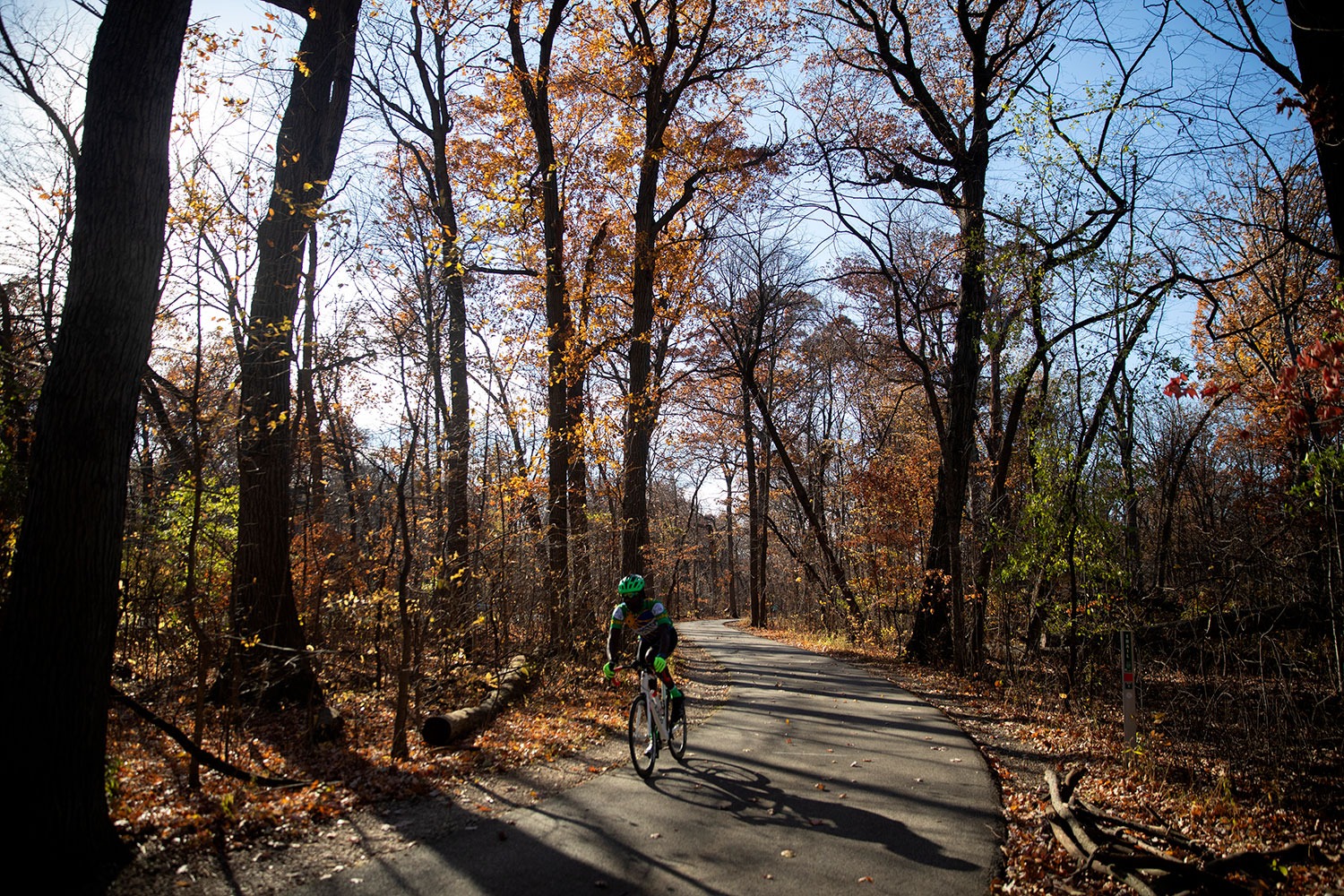Some historical figures are better known by their nicknames than the names they were given at birth: Buffalo Bill, Billy the Kid, Calamity Jane. As a result of those folkloric appellations, their reputations exist in that gray area between reality and myth. In Chicago, we have the Sauganash, née Billy Caldwell. Caldwell’s real name adorns a golf course and a forest preserve, but his nickname belongs to a Northwest Side neighborhood.
Why was Caldwell called the Sauganash? And what does the name mean? It all has to do with his ancestry. Caldwell was born in 1780, in a Mohawk refugee camp near Fort Niagara, New York. His father, William Caldwell Sr., was a Scots-Irish soldier who arrived in North America in 1773 and fought for the Crown against the colonists in the Revolution. His mother was a Mohawk.
As a young man, Caldwell moved west and apprenticed himself to the fur trading operation of John Kinzie and Thomas Forsyth, working first in southwest Michigan, then as a clerk in a trading post at the mouth of the Chicago River. Here, Caldwell married a Potawatomi woman, La Nanette. Since he was what was then known as a half-breed, her relatives called him “Sauganash” — a word that Natives applied to British colonists. Michael Lee Zimmerman Jr., who teaches Potawatomi and Ojibwe languages at the University of Wisconsin-Milwaukee, explained the name’s origin.
The word Zhaaganaash, (Potawatomi: Zhagnash) originates in zhiigaa-/zhiga meaning “thinned or thinning” at its core. the -aash/-ash end portion comes from -aazh/-azh meaning “skin.” The overall reference relating to British/Irish/Scottish/Welsh people being fair skinned with veins more visible on their skin surface, at least with respect to oral traditions surrounding the origins of the word and its unique application to those four peoples.
Billy Caldwell was the son of a Scottish father and Mohawk mother. He later would marry a Potawatomi woman and was granted land holdings in the Chicago area due to his services during the proceedings of the Treaty of Prairie du Chien, 1829. The moniker “Zhagnash” would have been applied to him as his ancestry was associated as Scottish.
That explains how Caldwell got the name Sauganash. So how did the neighborhood get the name? Caldwell fought with Tecumseh and the British in the War of 1812, but after the war, he returned to Chicago, becoming a well-known and well-respected fur trader. Because of his dual heritage, he developed good relations with both the local tribes and the American authorities. In 1829, the United States government was beginning the process of Indian removal in the Upper Midwest. Caldwell was recognized as a chief by both sides and invited to negotiate the Second Treaty of Prairie du Chien on behalf of the Potawatomi, Ojibwe, and Odawa. The Americans appreciated his fluency in both English and tribal languages. The tribes understood that the government was determined to force them off their lands and thought Caldwell could help get them the best deal, under the circumstances. The tribes ceded land in southern Wisconsin and northern Illinois — including much of the present-day Chicago area — in exchange for $16,000 a year. As a reward for his services, the government granted Caldwell 1,600 acres along the north branch of the Chicago River, which became known as “Caldwell’s Reserve.”
Caldwell was so well known in Chicago that the city’s first hotel, the Sauganash, at what is now Lake Street and Wacker Drive, was named after him. He didn’t stay here much longer, though. In 1833, after President Andrew Jackson signed the Indian Removal Act, declaring the government’s intent to resettle all tribes east of the Mississippi River, Caldwell helped negotiate a second treaty, which “exchanged five million acres of land in northeast Illinois and southeast Wisconsin for five million acres of land west of the Mississippi River first in Missouri and then in Iowa,” according to historian Ann Durkin Keating’s book Rising Up in Indian Country.
A plaque at the corner of Kilbourn and Rogers avenues (the traditional “Indian Boundary” that marked the division between American and Native territories) purports to mark the site of the “Old Treaty Elm” where the 1833 treaty was signed. “The tree which stood here until 1933, marked the northern boundary of the Fort Dearborn Reservation, the trail to Lake Geneva, the center of Billy Caldwell’s (Chief Sauganash) Reservation, and the site of the Indian Treaty of 1835,” the plaque reads. This is likely fictional. The treaty was actually signed at Fort Dearborn. In 1912, a real estate firm, Koester and Zander, bought 260 acres of Caldwell’s Reserve to build a housing development they called Sauganash, after the land’s former owner. “It is suspected that the firm created the ‘Treaty Elm’ story and installed the plaque to enhance the appeal of Sauganash,” according to a neighborhood history by the Sauganash Community Association.
After negotiating the final treaty, Caldwell began selling off his land along the Chicago River, then moved west with the Potawatomi, settling near present-day Council Bluffs, Iowa, where he died in 1841. His name lives on in Chicago, at the Billy Caldwell Golf Course and Caldwell Woods, and in the neighborhood of Sauganash — a name that is not quite as much of an honor as it sounds.




